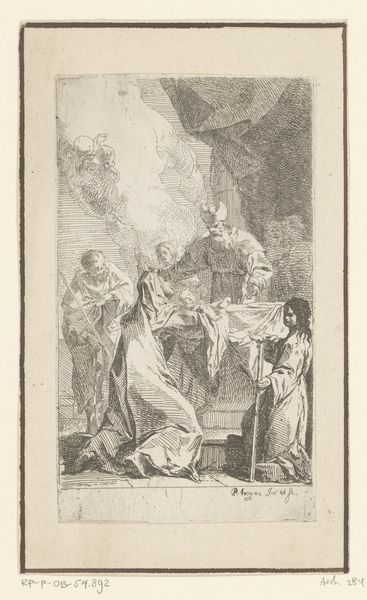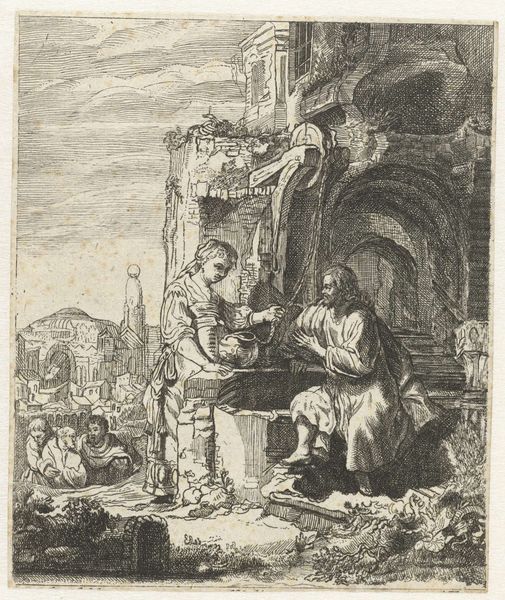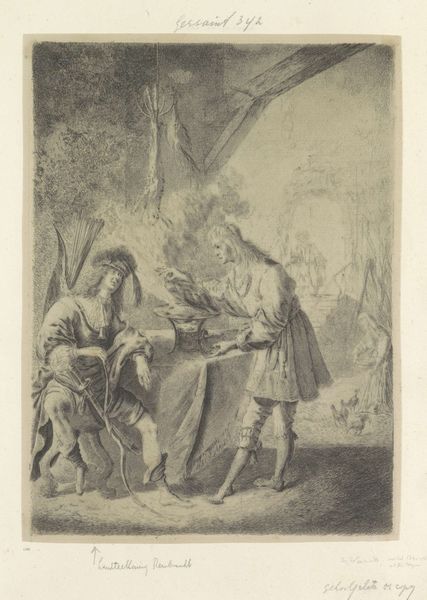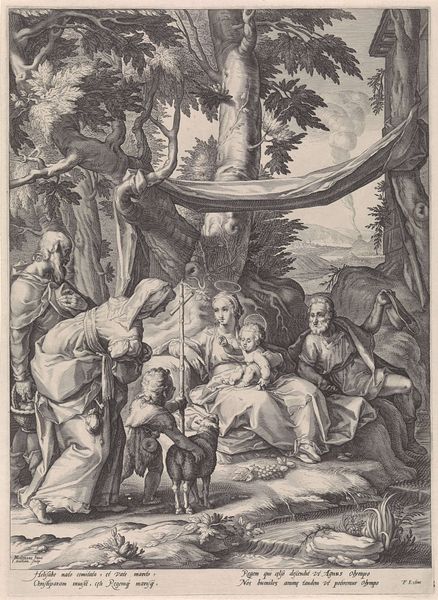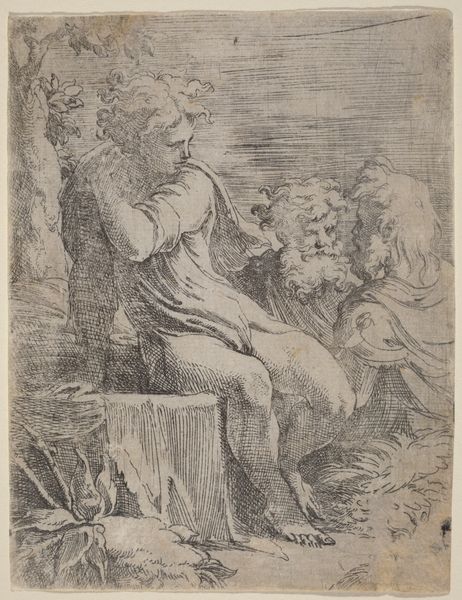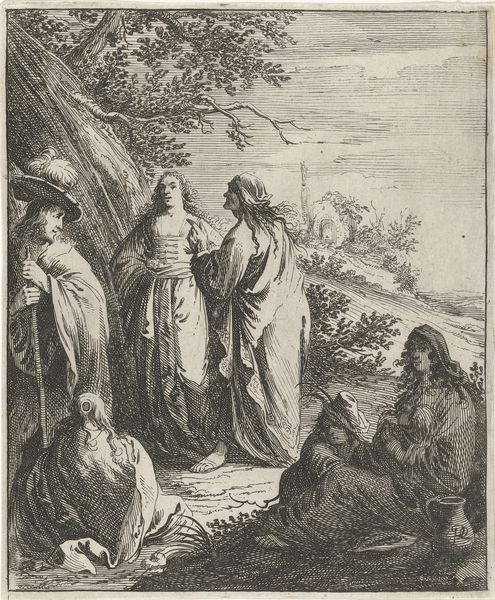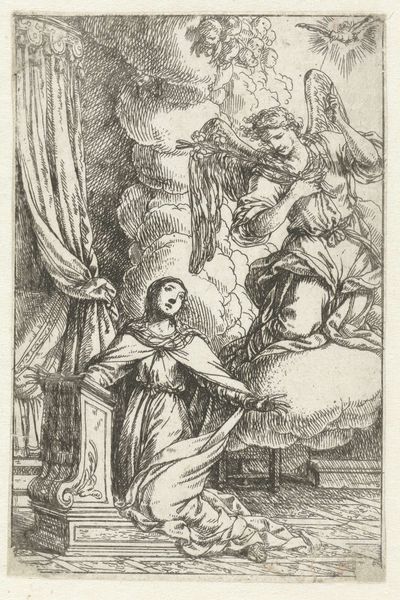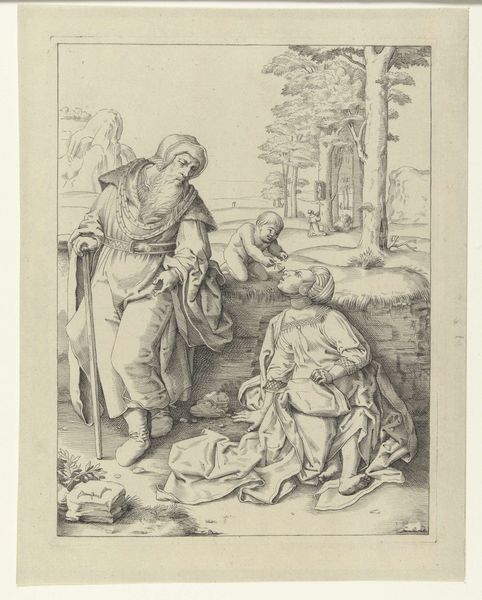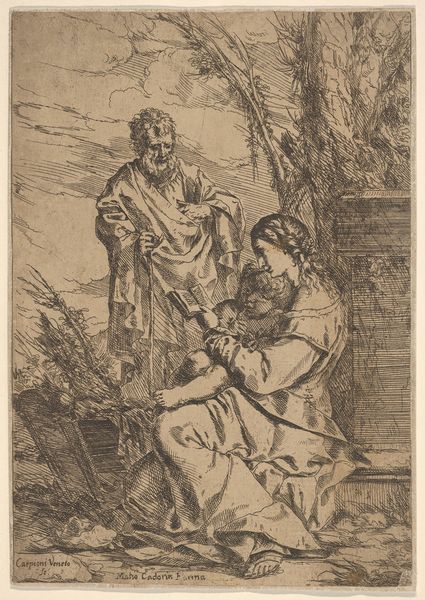
drawing, paper, pencil
#
portrait
#
pencil drawn
#
drawing
#
narrative-art
#
baroque
#
figuration
#
paper
#
pencil drawing
#
pencil
#
genre-painting
#
history-painting
Dimensions: height 276 mm, width 203 mm
Copyright: Rijks Museum: Open Domain
Curator: Wow, there's a tangible gloom clinging to this image. A real sense of foreboding just permeates the scene. Editor: Let's delve in! The piece before us, executed between 1639 and 1706 by Pieter Rottermondt, presents the well-known scene "Esau verkoopt zijn eerstgeboorterecht aan Jakob"—or "Esau Sells His Birthright to Jacob" to those of us less fluent in Dutch! It’s rendered on paper, using pencil. Curator: Right, the pencil work is incredible here, the detail he gets! Look at Esau, draped so theatrically. What objects! The hanging fowl and what's he offering Jacob -- lentils in a goblet? It makes me question my life choices! The atmosphere, though – heavy. All that detail just underscores this underlying tragic quality. Editor: Symbolically speaking, the offering itself carries weight. Lentils, a simple, everyday food, traded for the immense, intangible value of the birthright. In the scriptures, it underscores Esau's perceived lack of foresight and his prioritizing of immediate gratification over long-term legacy. What does it tell us? Is he impetuous or merely valuing something of less importance that his hunger at the moment. Curator: I wonder, doesn’t the artist invite us to consider Esau’s inherent character as distinct from his immediate choice. We see him not necessarily impulsive but rather disconnected from, and perhaps even rejecting, societal norms. In other words: destiny versus individual will. Editor: Yes, and observe how Rottermondt plays with light and shadow! Notice how the artist places Esau partially in shadow? It draws us towards this shadowy figure. This dramatic lighting intensifies the emotional impact. And notice that he is armed -- not in a triumphant way but awkwardly as he hunches over this seemingly important offering. Curator: Absolutely. And that distant figure further up the path – perhaps Isaac himself? He almost seems like a ghostly presence. The theme is profound, it goes beyond just one bad decision; it confronts the notion of tradition, expectation, personal need and cultural values. It reminds one that these concepts clash constantly, creating a cycle. Editor: It indeed is a striking reminder of the complex and interwoven tapestry of family, legacy, and choices. A poignant work that clearly communicates fundamental human characteristics of ambition and disregard. I think these emotional dimensions that this drawing has revealed invite many avenues of analysis! Curator: Yes. It resonates across the ages. Loss and the acceptance of decisions both good and bad are part of life. Something we all inevitably must face.
Comments
No comments
Be the first to comment and join the conversation on the ultimate creative platform.
